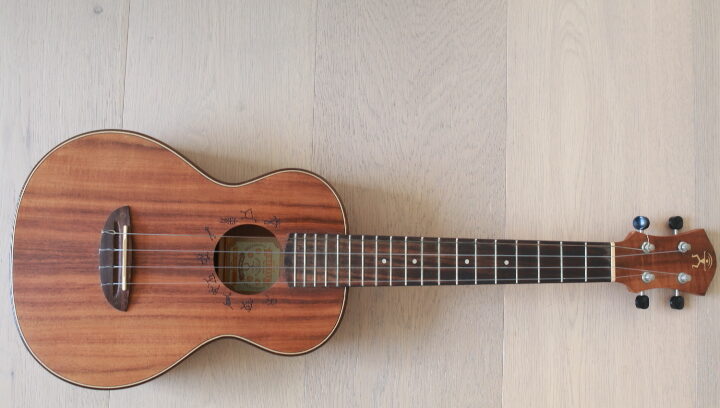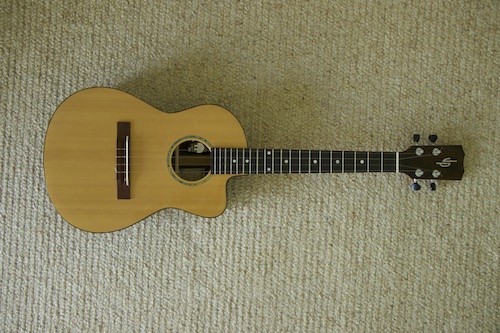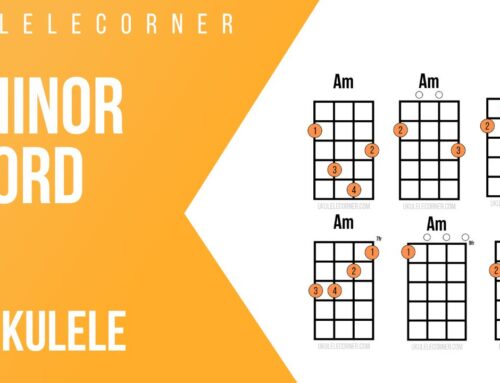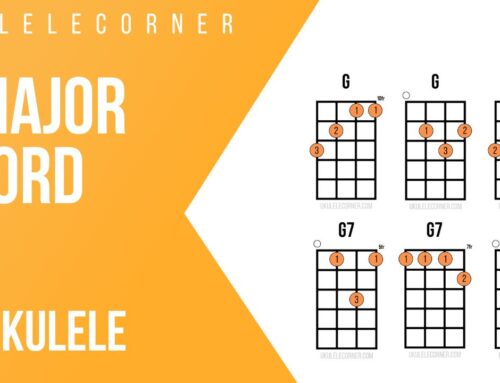Ukulele Sizes : Which is right for you?
In this article we’ll discuss different ukulele sizes and which one is right for you. We discuss soprano, tenor, concert, and baritone ukes. Each one fits different needs. And not only are they sized differently but each sounds different as well.
Low G vs. High G Tuning
Before we look at each of the different ukulele sizes, we should first talk about the tuning. Three of the four instruments we will discuss share the tuning G C E A. Only the baritone uke has a different tuning. More on that below.
However, the “G” in the G C E A tuning is sometimes tuned differently. The standard, most common tuning for ukulele is the so-called re-entrant tuning. (Sometimes this is also called “high G.”) In this tuning the G is higher in pitch than the other strings. So if we play the strings low to high, we’ll have a high note followed by lower notes that get higher with each string.
While this is the typical tuning for soprano, concert, and tenor ukuleles, some of these instruments will tune the G down an octave for a “low-G” tuning. Each tuning offers a different sound and resonance on the instrument. Both can be used well for different kinds of music on ukulele.
Soprano Ukulele
The soprano ukulele is the smallest of the ukes. As a result it also has a small sound. Nonetheless its size makes it very portable, lightweight, and suitable for all ages. The soprano perhaps reflects the original Portuguese braguinha more than the others. Like its earlier cousin, the soprano ukulele is just the right size for strumming and accompanying singers at kanikapila.

Concert Ukulele
Slightly larger than the soprano is the concert ukulele. The concert’s larger body and slightly wider neck make it suitable for the concert stage as it’s easier to play and has a bigger sound. The wider neck also allows for wider string spacing, making the concert easier to use for fingerstyle than its smaller soprano counterpart.

Tenor Ukulele
The tenor is the next size up and yet again it is slightly larger than the concert. It has a longer neck, wider string spacing, and a slightly heavier and bigger body. Again, the extra size provides a rich and deeper sound. The tenor ukulele is ideal for fingerstyle playing and great for the concert stage or recording.

Baritone Ukulele
Finally, the baritone ukulele is the largest of the uke family. Not only is it much bigger than even the tenor, it also has a different tuning. The baritone ukulele is tuned D G B E, exactly like the top four strings of the guitar. For this reason, the baritone ukulele is an excellent candidate for playing classical music, especially classical guitar music on the ukulele.

***
We hope this introduction to the different ukulele sizes has been helpful for you! Whichever size ukulele you pick up, you can learn how to play your ukulele in many different styles with a structured approach at Ukulele Corner Academy. Find out more and join Ukulele Corner Academy today!




Leave A Comment